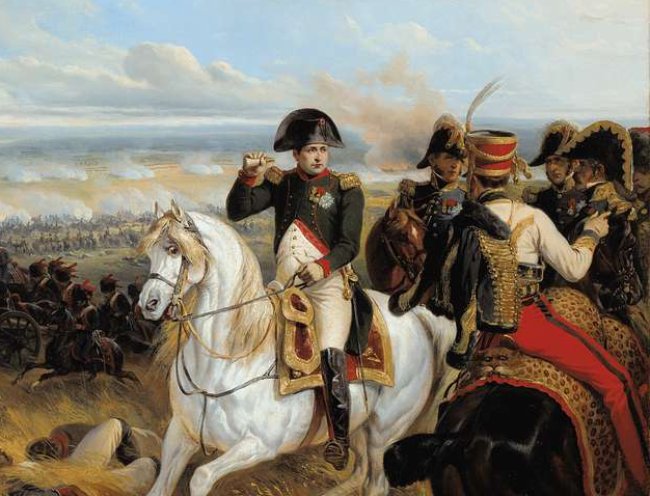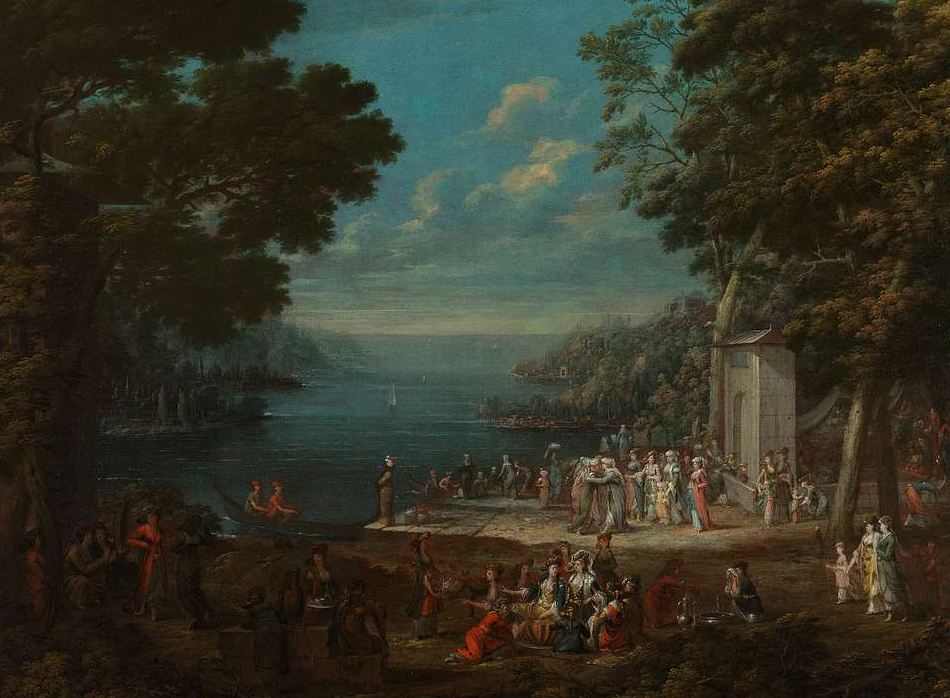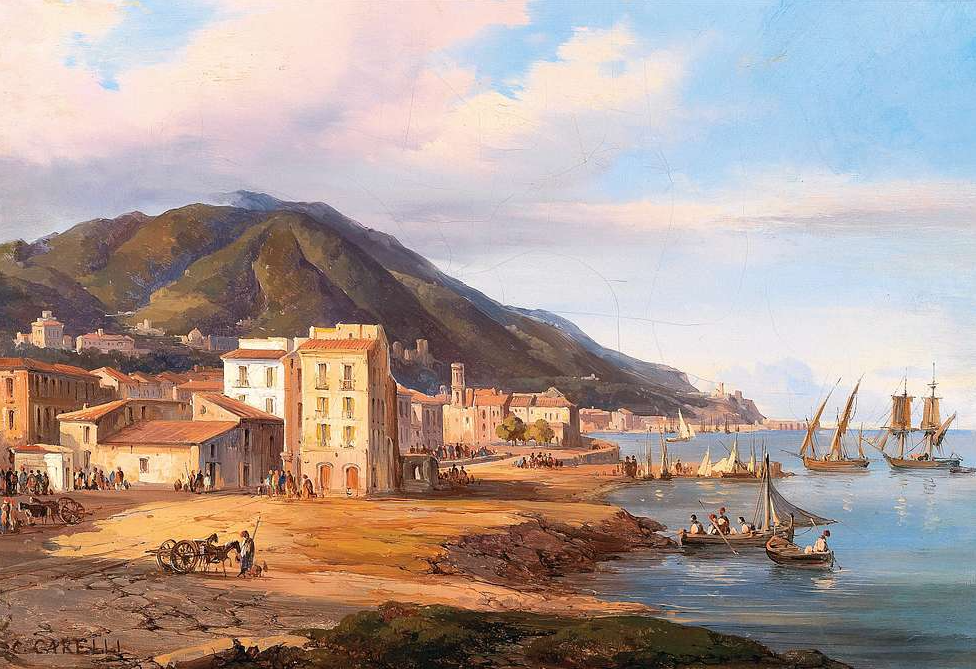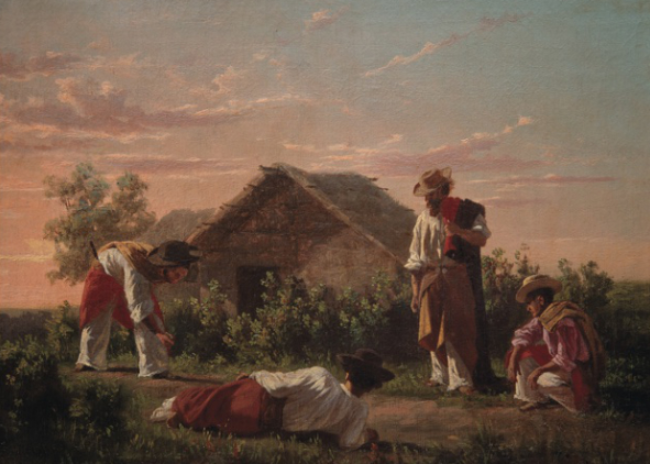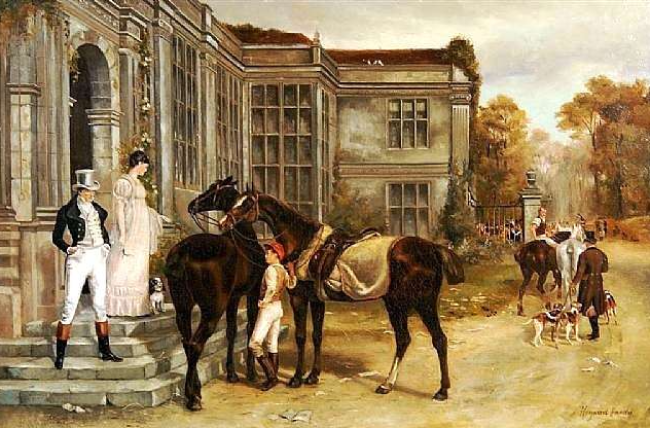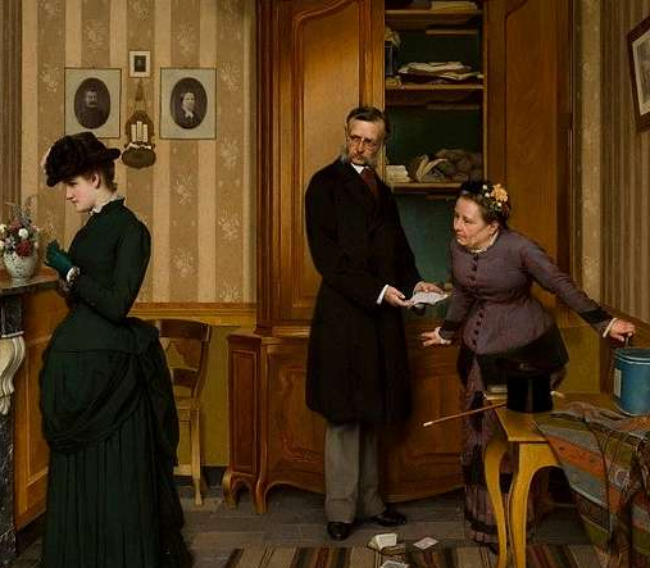Beautiful And Cruel
The Regency was an era of extreme glitz and glamour for the upper echelons of society—and poverty and crisis for everyone else.

1. It Began With A Royal Crisis
King George III of Great Britain was prone to outbursts of mania, and later historians widely agree that he likely suffered from bipolar disorder at the very least. He became known to some as “The Mad King”. This led to discussions of a Regency Act in Parliament.
Such an act would allow a regent to take over if the Mad King had one of his episodes, but every time they tried to pass one, George would recover just in time to quash it—until fate dealt him the fatal blow.
 Allan Ramsay, Wikimedia Commons
Allan Ramsay, Wikimedia Commons
2. The King’s Son Ascended
When measles suddenly took George's beloved youngest daughter, Princess Amelia, on 2 November 1810, it was too much for the Mad King to bear. His mind shattered, and he never recovered for the rest of his days. No long could he stop a regency, and Parliament passed "Care of King During his Illness, etc. Act 1811".
The Mad King's son George became the Prince Regent and ruled in his father's stead. The Regency had begun—but these were far from the only seismic events rocking Great Britain at the time.
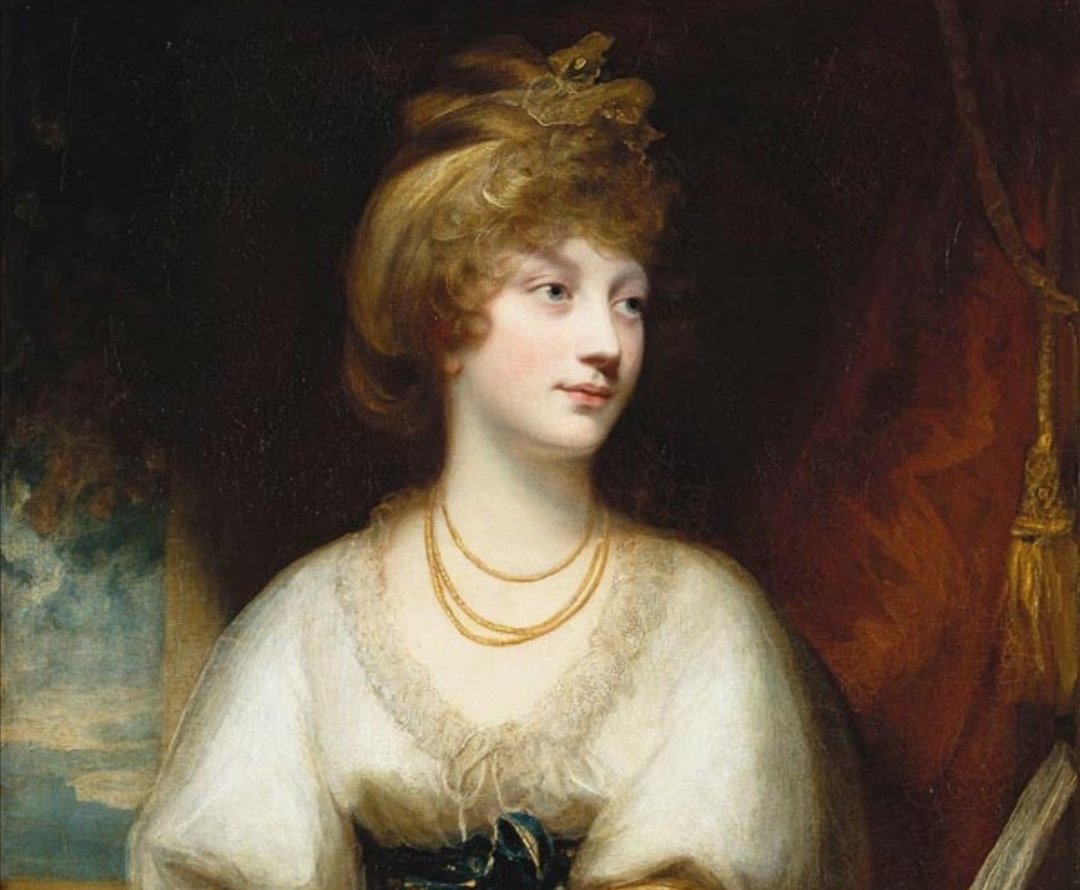 William Beechey, Wikimedia Commons
William Beechey, Wikimedia Commons
3. War Was A Fact Of Life
During the Prince Regent’s reign, England was beset with chaos and conflict on all sides. The United States had just achieved independence, and two nations remained at each other's throats, leading to the inevitable War of 1812 in June of that year. But that was just the New World.
The Brits also had to deal with the aftermath of the French Revolution in Europe, the consequences of which reverberated through every layer of society.
4. Conflict Raged With France
Following the French Revolution, the Napoleonic Wars broke out between France and Britain, and stretched across almost the entirety of the Regency. Beginning in 1799, the war with France would not officially end until Napoleon’s abdication in June 1814.
The fighting on the continent was not just a matter of concern for haughty British army generals; everyone in the country felt the effects.
 Philip James de Loutherbourg, Wikimedia Commons
Philip James de Loutherbourg, Wikimedia Commons
5. The Cost Of The War Was Staggering
The British government spent a whopping £1.7 billion fighting Napoleon alone. That number would be bad enough today. But adjusted for contemporary inflation, they spent the equivalent of roughly $230 billion of today’s money fighting France. But where did the government find this kind of money?
6. Everyone Felt The Squeeze
The gargantuan cost of the war effort had to come from somewhere and the bulk of the expense fell on the shoulders of the British taxpayers. Many were understandably unhappy about this. But money was not the only sacrifice demanded by the military campaign.
 Yale Center for British Art, Picryl
Yale Center for British Art, Picryl
7. The Military Grew Exponentially
Fighting Napoleon needed not just money, but cannon fodder too. The British state called many ordinary young men into battle. So high was the rate of conscription that by the time the Regency era ended, the British army had grown to six times its previous size, numbering around 250,000 soldiers.
This was far from the only growth the era saw.
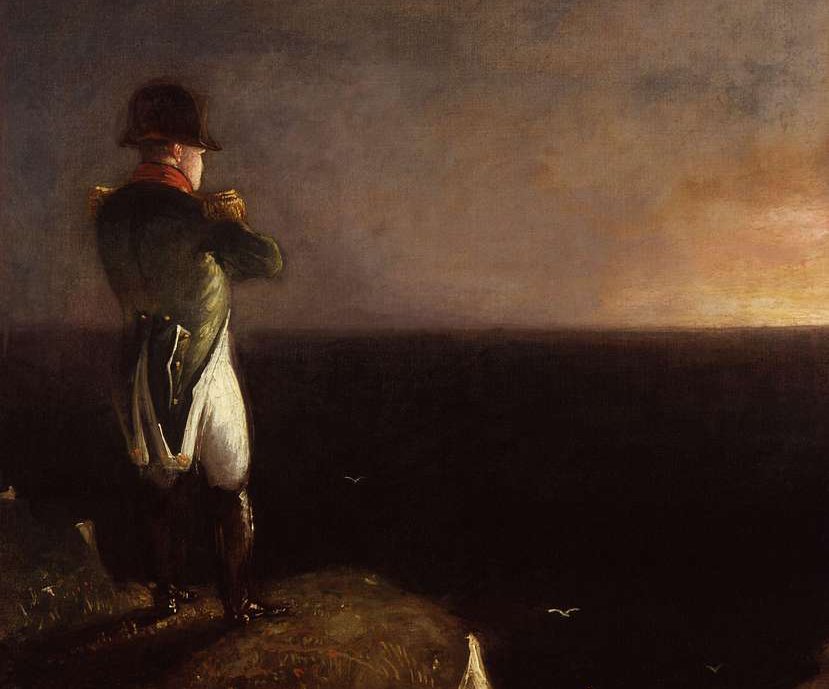 National Portrait Gallery London, GetArchive
National Portrait Gallery London, GetArchive
8. It Was The Dawn Of A New Economic Era
The Regency Era brought with it the dawn of the Industrial Revolution, which completely upended the economic structure and productive forces in Britain. While this brought with it many advantages, such as advances in technology—mechanized farming equipment permanently altered agricultural labor and construction began on the nation’s first railway system—there were also a lot of negative effects that rippled through the populace.
 Jan Willem Pieneman, Wikimedia Commons
Jan Willem Pieneman, Wikimedia Commons

History's most fascinating stories and darkest secrets, delivered to your inbox daily.
9. Inequality Was Rampant
With the economy steadily rising, economic inequality nonetheless ravaged society. The cultural and economic gaps between poor and working-class citizens on one end and the nobility and wealthy landowners on the other got wider and wider. Soon, discontent began to bubble to the surface.
The ruling classes had reason to be nervous, considering the masses’ numbers.
10. There Was Mass Migration
The population of Britain began to rise rapidly during this period and, combined with the disruptions to production caused by the Industrial Revolution, this led to economic turmoil for many. Thousands of rural workers lost their jobs and, as increasing numbers of factories began to open in cities, urban centers exploded in population as these unemployed countryfolk migrated for work. The cities began to feel the strain.
11. Most People Lived In Destitution
The mass migration to cities meant that most people lived in overcrowded slums known as “rookeries”. These districts were rife with gambling, thievery, violence, drinking, and sex work. The squalor only worsened with the population boom. Some of these slums in particular gained notorious reputations.
 Gustave Doré, Wikimedia Commons
Gustave Doré, Wikimedia Commons
12. Lawlessness Reigned
The rookery in St. Giles was especially notorious. Notable for its large population of Irish refugees, it became known as “Little Ireland”. Such was the level of poverty and lawlessness that the slum became essentially run by local gangs. Open sewers ran through rooms in houses.
William Hogarth famously depicted the slum's destitution in his print Gin Lane. It was not the only slum to inspire artists of the time.
13. Suffering Inspired Storytelling
Nearby to St. Giles was another slum called the Devil’s Acre, located in present-day Westminster, now the site of British parliament. Political elites were completely absent here during the Regency Era, but it did inspire a renowned author. The Devil’s Acre was home to an educational institution for troubled youth known as the “Ragged School”.
The school served as the inspiration for Charles Dickens’ Oliver Twist, which accurately depicted the life of these poor children. It was a stark contrast to the life of the upper crust.
14. The Leisure Class Had Classy Leisure
Life on the other end of the socioeconomic spectrum could not have been more different. The rich, aristocratic sections of the British population attended lavish balls, sometimes twice a week, during what they affectionately called “the season”. This coincided with Parliament’s schedule, taking place between November and July when the government would break for summer recess.
While a mass exodus of the poor was happening in the countryside, a similar migration was happening among the rural wealthy families.
15. The Rich Moved As Well
The main festivities associated with the season took place in the capital. As Parliament reopened at the onset of winter, hundreds of wealthy families from the countryside would leave their lavish homes and flock to equally grand lodgings in London.
There existed among the upper class not just a desire for the opulence of the season, but a social necessity for it.
16. The Season Was A Must
Whether they liked it or not, every member of the aristocracy had to participate in the season if they wanted to maintain or advance their position. Failing to attend these exclusive balls was detrimental to one’s social status and the events, far from being mere social gatherings, were where important relationships solidified. The stakes were high for budding business relationships, landlord deals, and, of course, courting young couples.
17. Dating Was An Ordeal
Love was only a secondary consideration when it came to romantic relationships of Regency era aristocrats. Parents coerced young people into advantageous pairings during the season. Courting would take place during afternoon tea, garden walks, concerts, or balls. The desired outcome for most pairings was increased wealth, property, or status. Some families went to extreme measures.
18. Some Pairings Were Taboo
In the eyes of many aristocratic parents of the Regency era, status and social advancement really were the most important reasons for their children to court. This sometimes went so far that a young debutant might have an arranged courtship with her first cousin. Position was everything.
But whether one paired with their cousin or not, their family would always have heavy involvement regardless.
19. It Truly Was A Family Affair
Regardless of who one paired with, pursuing these courtships very publicly and in the open was a requirement for anyone who wanted to be anyone in the upper crust. This was so that friends and family could keep abreast of how the courtship was advancing—or how it wasn’t.
In fact, families went to some seriously drastic lengths to ensure the couples’ progress was public knowledge.
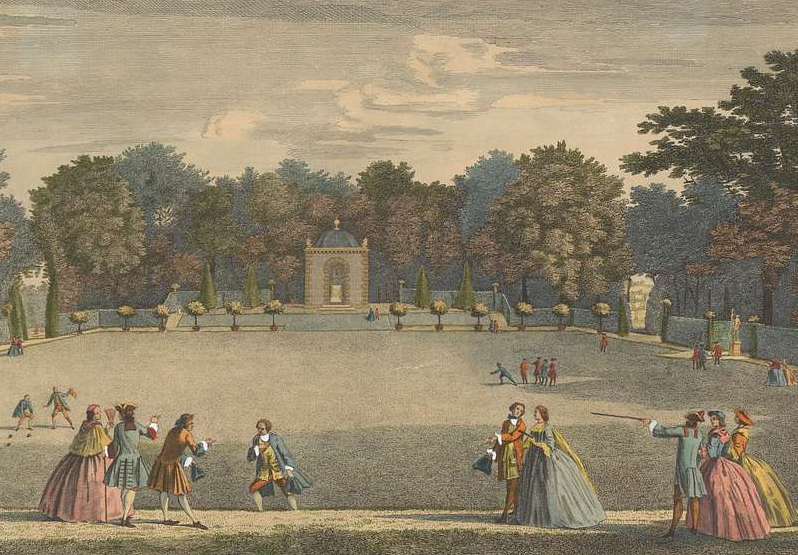 Yale Center for British Art, Picryl
Yale Center for British Art, Picryl
20. A Date Was For Three
Families afforded courting couples no privacy at all; A chaperone was present at all times. This was likely due to the conservative attitudes of the time towards intimacy (and the scandals that unsupervised intimacy could result in). But the kids, as they always do, found a way.
21. The Wealthy Were Beach Bums
The Regency era saw the rise of another now-common pastime amongst the rich. To unwind from the many nights of ballroom dancing, wealthy citizens would spend their days on the beach. This provided fun and relaxation. But there may have been other benefits too.
22. Some Had A Beach Prescription
In the early 18th century, some physicians began to explore the medicinal benefits of “sea-bathing”. By the early 19th century and the dawn of the Regency era, doctors were now straight up prescribing trips to the beach. Saltwater soaks and seaweed rubdowns were medical solutions posed for many different kinds of illnesses.
But the news of constant, brutal warfare did its best to get in the way of rest and relaxation.
23. War Prevented Vacations
France and Italy ranked among the top vacation destinations for wealthy Brits in the 19th century. However, with the onset of the Napoleonic Wars, these countries suddenly became inaccessible. This forced the wealthy to think local—and the small, coastal British towns they chose thanked them for it.
Many of these areas boomed into popular holiday destinations, attracting hordes of wealthy spenders and notable figures like Jane Austen. But the social stigmas stretched to the seaside too.
 Henri Félix Emmanuel Philippoteaux, Wikimedia Commons
Henri Félix Emmanuel Philippoteaux, Wikimedia Commons
24. Women Preserved Modesty At The Beach
Social attitudes remained highly conservative during the Regency era, even by the seaside. A visible ankle alone represented the height of raunchiness, so the idea of men seeing women swimming was out of the question. Beachgoers hatched a ridiculous invention to avoid any “inappropriate” displays.
25. Women Had Some Help Getting To The Water
Beachgoers took drastic measures to ensure no male eyes would fall on women in their bathing suits. “Dippers” became commonplace to assist women in swimming. They would begin by entering a dressing room with wheels known as a “bathing machine”.
Once they had changed, the dippers led horses in pulling the bathing machine to the edge of the water where women could exit through a back door and into the sea, leaving their modesty intact. It was a ridiculous and inconvenient solution to a perceived summer problem. But at least they usually got a summer.
26. One Year Was Particularly Dark
The year 1816, one of the darkest of the Regency era, became known as the “Year Without a Summer” thanks to critical climate abnormalities caused by a massive volcanic eruption in Indonesia. The subsequent volcanic winter affected much of the world, even as far away as Great Britain.
Global average temperatures dropped, and Europe recorded its coldest summer since recording began, leading to a bad harvest and famine among the working class. And as if that wasn't bad enough, the timing couldn't have been worse.
 Caspar David Friedrich, Wikimedia Commons
Caspar David Friedrich, Wikimedia Commons
27. There Were A Lot Of People
The staggering growth from Britain's population boom was already exacerbating the social crises that were ravaging the country in the wake of the Napoleonic Wars. The Year Without Summer couldn't have happened at a worse time.
But it wasn’t just the vast numbers of poor that affected these events. The government had their part to play.
 Caspar David Friedrich, Wikimedia Commons
Caspar David Friedrich, Wikimedia Commons
28. Government Policy Hurt The Poor
The government of the United Kingdom introduced the Corn Laws in 1815. These were tariffs and trade restrictions on imported corn and other food products. This law intended to favor domestic British farmers, making imported food prohibitively expensive. However, it mostly ended up making food prices skyrocket just in time for the famine.
But the attacks of the ruling class on the poor did not stop at legislation.
29. Mass Dissatisfaction Met Tragedy
Following the Year Without a Summer and the Corn Laws, tensions reached a boiling point. On August 16, 1819, a mass gathering of working-class people, to this day the largest ever political gathering in the country, amassed at St. Peter’s Field in Manchester. The government responded with force.
A governmental cavalry force known as the Yeomanry charged into the crowd of 60,000, killing 18 protesters and injuring 700. The event would become known as the Peterloo Massacre, ironically named in reference to the Battle of Waterloo, fought and won by the British state just four years previously. The protest ended in tragedy, but affected change nonetheless.
30. Reform Came At A Cost To Some
Partially in response to the demands at St. Peter’s Field, the government eventually passed the Reform Act in 1832. This introduced major electoral changes to England and Wales and broadened representation, previously skewed in favor of those who owned land, but now with more urban constituencies. But it was a double-edged blade.
However, as the Act specifically permitted only “qualifying men” to vote, it became the first explicit legislative hurdle to granting women the vote due to its narrow definition of a voter. It would be a long time before the women of Britain gained the vote, but others gained further freedoms the following year.
 Yale Center for British Art, Picryl
Yale Center for British Art, Picryl
31. A Heinous Practice Began To Crumble
At the beginning of the Regency era, slavery was still legal and common throughout the British Empire. But as the era progressed, support for the abolitionist movement grew, finally culminating with the passing of the Slavery Abolition Act 1833. Politics were slowly progressing, but progress was rapid in other cultural areas.
 Art Institute of Chicago, Picryl
Art Institute of Chicago, Picryl
32. Culture Flourished
With the dawn of the Industrial Revolution and some progressive political legislation throughout the Regency era, other areas of society and culture began to noticeably shift as well. Literature, architecture, and the arts saw a huge cultural boom. The era produced some figures still widely recognized and appreciated to this day.
33. A Legendary Novelist Emerged
The Regency era saw the publication of the very first novels by a fresh-faced newcomer named Jane Austen. Austen released the genre-defining Pride and Prejudice in 1813. Well-received upon publication, her star would only continue to rise from there, cementing her popularity, especially among young women.
Another prominent pillar of girlie culture would also emerge at this time.
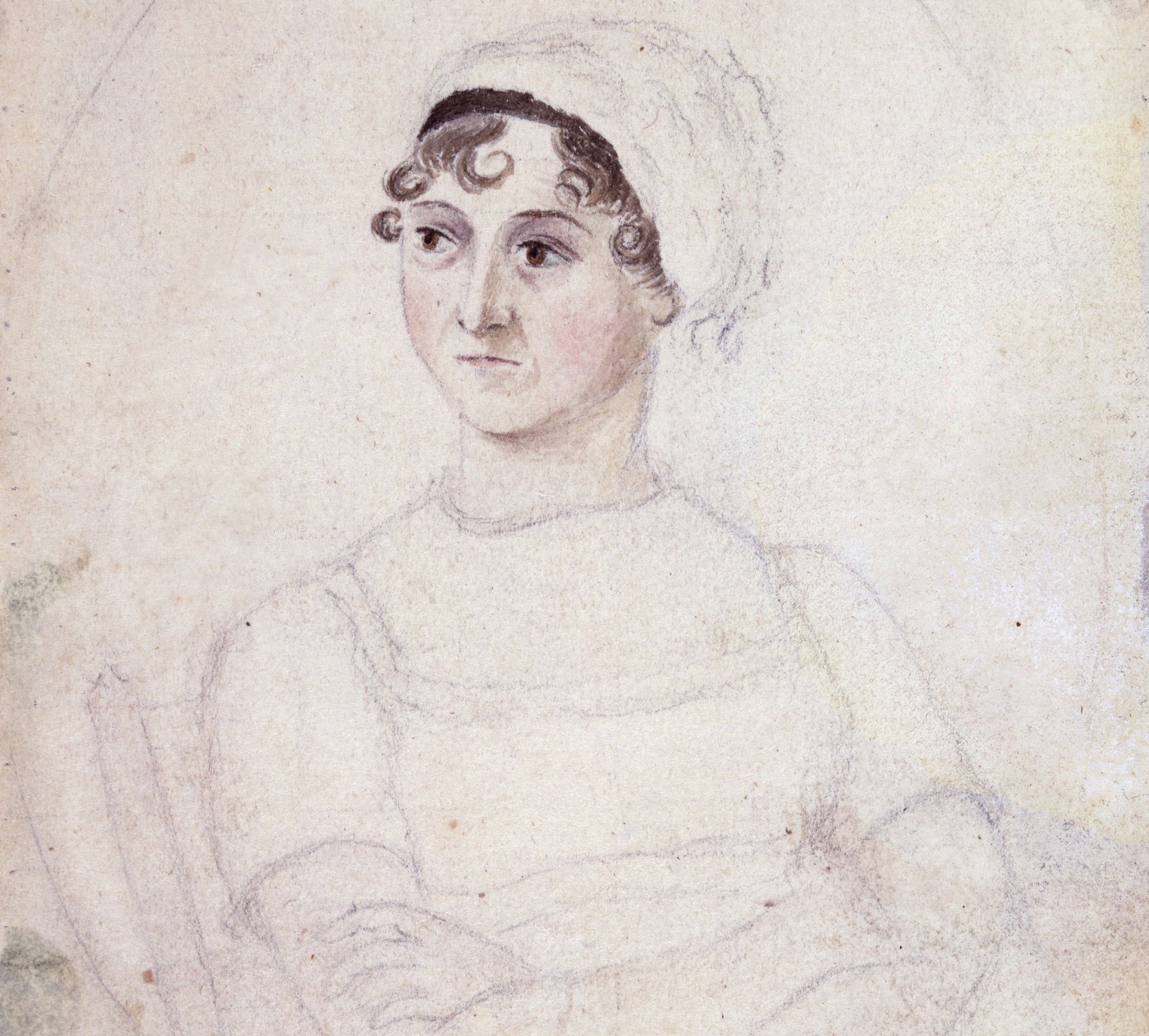 Cassandra Austen, Wikimedia Commons
Cassandra Austen, Wikimedia Commons
34. Women Fantasized About A Dreamy Poet
Poetry also increased in popularity during the Regency era. One poet in particular who received much attention was Lord Byron. His creative output is not all that received praise; he also became widely known for his fetching looks. Young women would carry around with them tiny portraits of Lord Byron and many have since identified him as the original teen heartthrob.
His popularity may have reflected a general turn towards visual appeal.
 Thomas Phillips, Wikimedia Commons
Thomas Phillips, Wikimedia Commons
35. Style Took Over
A distinctive fashion and style emerged in the Regency era that greatly contrasted the period with those that came before. Prior to the 19th century, British fashion was largely formal and defined by lace, brocades, powder, and periwigs. The new era saw the rise in a relatively informal style of dress.
Clothing became increasingly deployed as a form of individual expression. One scholar described how “fashion, embodying new social values, emerged as a key site of confrontation between tradition and change”. But fashion was not the only art form through which this expression bloomed.
 Friedrich Wilhelm Keyl, Picryl
Friedrich Wilhelm Keyl, Picryl
36. Buildings Were Fashionable Too
Riding the broad wave of the Regency era cultural shift, architecture and interior design underwent a distinctive evolution as well. Terraced houses dominated town centers and many classical buildings popped up in Britain’s cities, with existing buildings renovated to fit the emerging style. Wrought iron balconies and bow windows became more popular in wealthier houses.
On the decorative front, elegant furniture and vertically striped wallpaper also saw a rise in prominence in well-off homes. It definitely helped that the Regency overlapped with another notable cultural movement.
37. It Coincided With Romanticism
Artists of the Regency era overlapped with a movement called Romanticism. The Romantic movement encapsulated art, music, literature, and poetry, and many of the biggest names were prominent figures during the Regency. They included Jane Austen, William Blake, Lord Byron, John Keats, Mary Shelley, and William Wordsworth.
The explosion in culture during the Regency era reflected the financial habits of its namesake.
38. The Regent Was A Spendaholic
The eponymous Prince Regent was also one of the era’s most prolific patrons of architecture and the arts. Upon taking power, George IV began to order expensive building and renovation projects throughout the country, even though the government could not afford such extravagances.
This meant, as usual, that the cost fell on the shoulders of the common people. But spending was not the only frivolous habit of the Regent.
39. Society Underwent A Tonal Shift
Despite the squalor and poverty that existed in the slums, the lives of the Prince Regent’s social circle grew much more glamorous during his reign. And this wasn't just in contrast to the lives of the poor—the Prince Regent brought a new level of opulence to upper-class society that his father couldn't have dreamed of.
George III presided over a reserved, pious society of upper-class stiffs. The Regent’s rule saw high society become much more frivolous and ostentatious. It reflected George IV’s personality.
 Johann Zoffany, Wikimedia Commons
Johann Zoffany, Wikimedia Commons
40. The Regent Was All About Good Vibes
The Regent largely removed himself from the intrigues of politics and military campaigns, usurped by the expertise of his advisors. Instead, George IV pursued a life of hedonism. This was in part to rebel against what he saw as disapproval of his lavish lifestyle from his father. This, too, came at the expense of the poor, as the ruling Prince took no interest in addressing the suffering of the underclasses.
He instead directed his energies toward grand vanity projects.
41. They Built A Zoo
One of the Regent’s pet projects was the opening of Regent’s Park, a large, public park in London. Part of the land in this park came under the ownership of the Zoological Society of London, who proposed that the Prince Regent grant a Royal charter to open a zoo.
George was more than happy to oblige, and London Zoo opened in 1829, though only for research at first. It would later open to the public in 1847 when it needed to raise funds. The era saw the invention of other forms of distraction.
42. They Churned Out Novels
1814 saw the invention of steam printing. This new form of printing allowed the printing of sheets at five and a half times the speed of previous printing technology, and enabled the mass production of “silver fork novels”. These were books that depicted the lives of the aristocratic class, and publishers would often use them as a way of spreading gossip, heavily hinting at the real-life identities of the “fictional” characters.
These novels gained widespread popularity, particularly among women readers. Perhaps it was because they couldn’t do much else.
43. Infantilizing Women Was Common
Unsurprisingly, attitudes toward women in the Regency era were quite backwards by today’s standards. Men discouraged society women from “exerting” themselves and they took on quiet, calm hobbies with little to no physical activity such as sewing and embroidery. Some women did pursue dancing or horse riding, but only recreationally–competitive participation was unheard of for women.
The justification for this attitude was a belief at the time that people had limited energy levels and that women, considered the “weaker sex,” had the highest risk for overexertion due to their energy-draining menstrual cycles. It was not the only backwards idea to gain cultural momentum.
44. Brutish Sports Were Huge
One of the most popular sports during the Regency era was bare-knuckle boxing. Known also as prizefighting, the era has since become known as “the peak of British boxing,” due to the country being the only real area for competitive boxing in the world at the time. Bare-knuckle boxing was actually illegal, but such was its popularity that local authorities would look the other way—often because even they enjoyed putting money on the sport themselves.
The betting economy around the fights was enormously corrupt and many of those involved would engage in match fixing. Still, sports were one of the few cultural pastimes that would bridge the wealth gap.
45. Classes Competed At Cricket
Cricket was another sport that was enormously popular during the Regency era and provided a rare opportunity for classes to mix. Each year, the Lord’s Cricket Ground would host a Gentlemen vs Players match which pitted a team of wealthy amateur cricket players against a working-class team of professional players. Naturally, the professionals would usually end up the victors.
In the Coronation Match of 1821, celebrating George IV’s ascension to King, the Gentlemen fell so far behind that they conceded defeat and the match ended early. Other sports were gaining in popularity too.
46. The World’s Most Popular Sport Began
Soccer was in its infancy during the Regency era, and it looked very different to the sport we know today. There were no limits to the number of players on a team and teams would sometimes consist of entire villages. The play area was an unspecified stretch of land between two areas. The goal was for players to move a ball, often made from an inflated pig’s bladder, to a distant target in the opposing team’s village. Kinda like a game of reverse-capture the flag.
By the beginning of the Regency era, efforts were already underway to turn this “mob football” into an organized team sport with a written set of rules. These solidified by the dawn of the next era of British history.
47. The Ascension Of A Queen Ended The Era
The opulent, bombastic, and tumultuous Regency era came to an official end with the ascension of Queen Victoria to the throne in June 1837, beginning the Victorian era of Great Britain. The Regency era began because of the madness of one monarch. That madness continued through the era for the underclass, while the new reigning monarch’s hedonism and extravagance personified life for the ruling class.
The contrast in quality of life between the two strata of society would continue to define life in Britain for many years to come—arguably right up to today.
 Heinrich von Angeli, Wikimedia Commons
Heinrich von Angeli, Wikimedia Commons
48. Kids Snuck Around
Many unearthed letters from the era illuminate the secret habits of young couples who chafed against the strict rules around courtship. Crafty kids managed to sneak away together and steal a precious few minutes alone. Some of them may have been unlucky enough to have their parents find these letters and admonish them. It was, after all, a new sign of the times.
49. Love Letters Were The Old Social Media
These young couples’ parents may not necessarily have communicated in quite the same way, much like our evolving methods of contact today. The Regency era saw an explosion in the popularity of love letters as literacy levels rose among the populace. But letters paled in comparison to some other gifts.
 Düsseldorf auction house, Picryl
Düsseldorf auction house, Picryl
50. Women Gave A Piece Of Themselves
While a love letter was an exciting and new way for couples to express themselves, there were some gestures considered superior—though today they're pretty disgusting.
The highest form of flattery was to receive a lock of your beloved’s own hair as a gift. It was supposed to offer comfort in the absence of your courtier, particularly if you only saw them at a biweekly ball. Just creepy, if you ask me.



